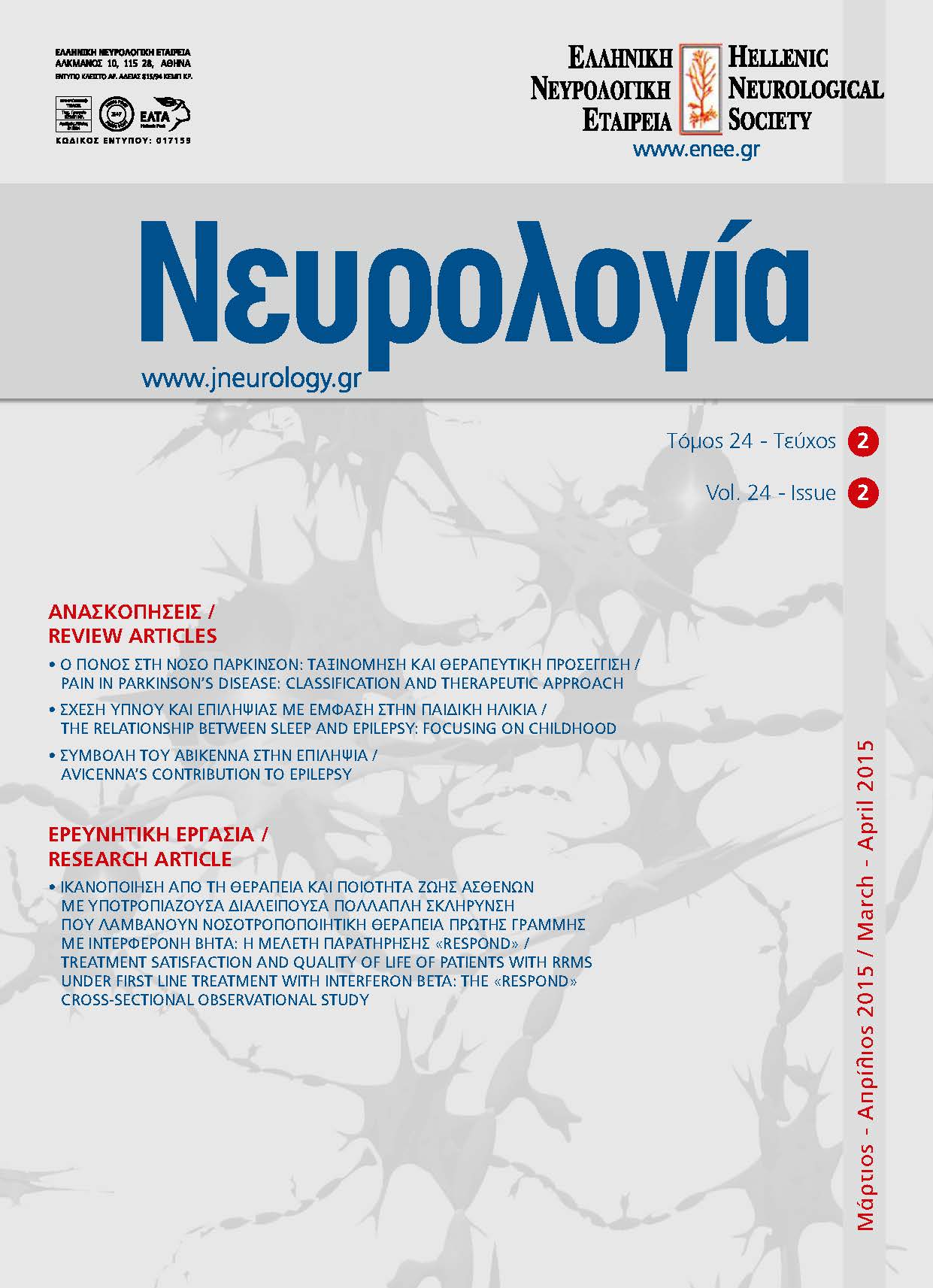Pain in Parkinson’s disease: classification and therapeutic approach
Keywords:
Parkinson’s disease, pain, non motor symptomsAbstract
Pain, one of the sensory symptoms of Parkinson’s disease, is a frequent yet poorly understood non-motor symptom the disease, sometimes severe enough to overshadow the motor symptoms of the disorder.
In this review article, we consider pain that can specifically be attributed to PD, either directly (primary) or
indirectly (secondary).
The most commonly used classification system for pain used is the one proposed in 1998 by Ford. Ford
proposes five different categories of painful sensations in PD; musculoskeletal, radicular/neuropathic, pain
associated to dystonia, central or primary pain and pain associated to akathisia.
Regarding the therapeutic approach, there are as yet no validated and evidence based treatment algorithms for pain in PD. However, correct diagnosis of the type of pain and the exact etiology is crucial in
order to determine the management strategy. These strategies include levodopa and dopamine agonists,
deep brain stimulation (DBS) and opiods. In addition, the role of multidisciplinary (non pharmaceutical)
therapy in the management of pain in PD is paramount.


